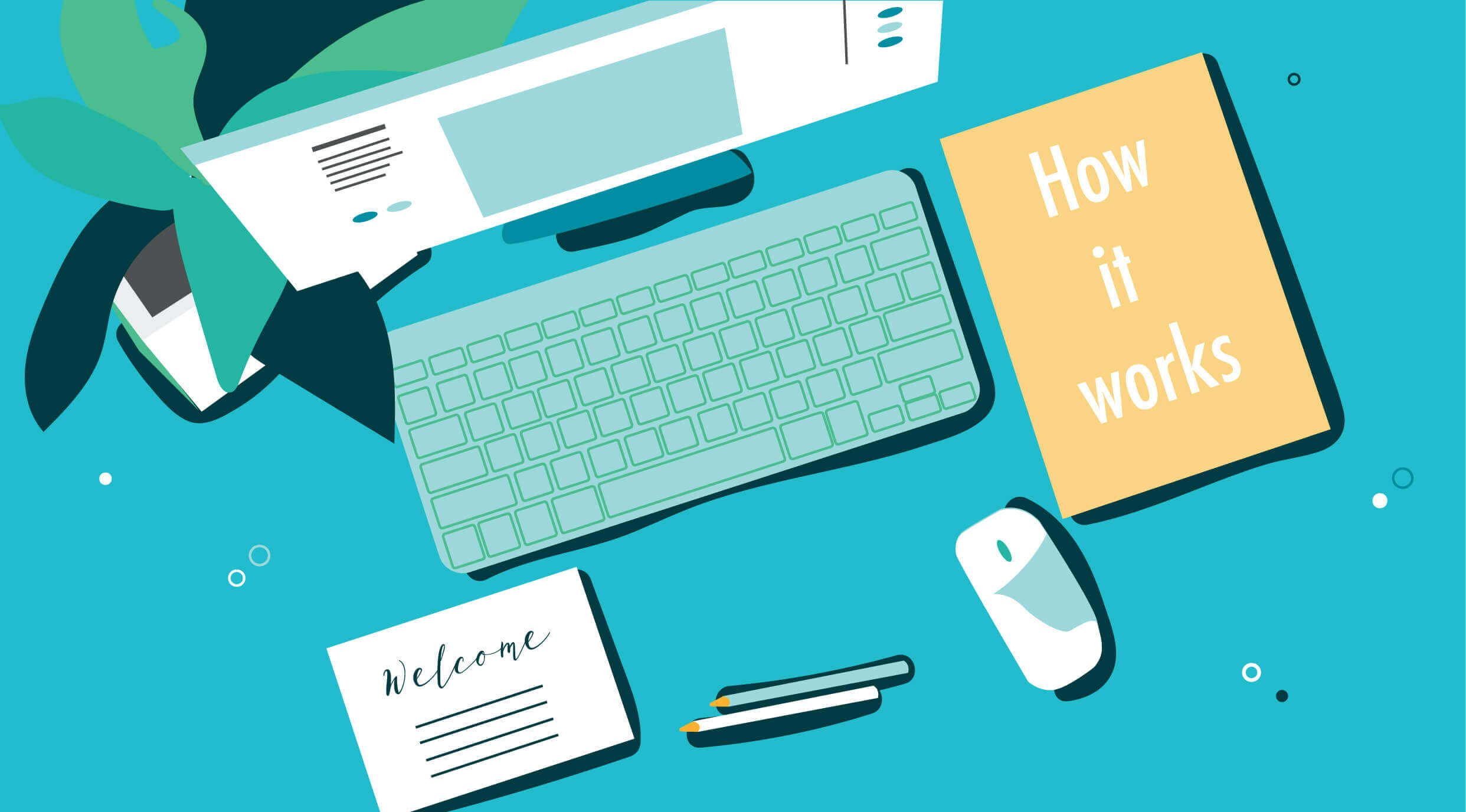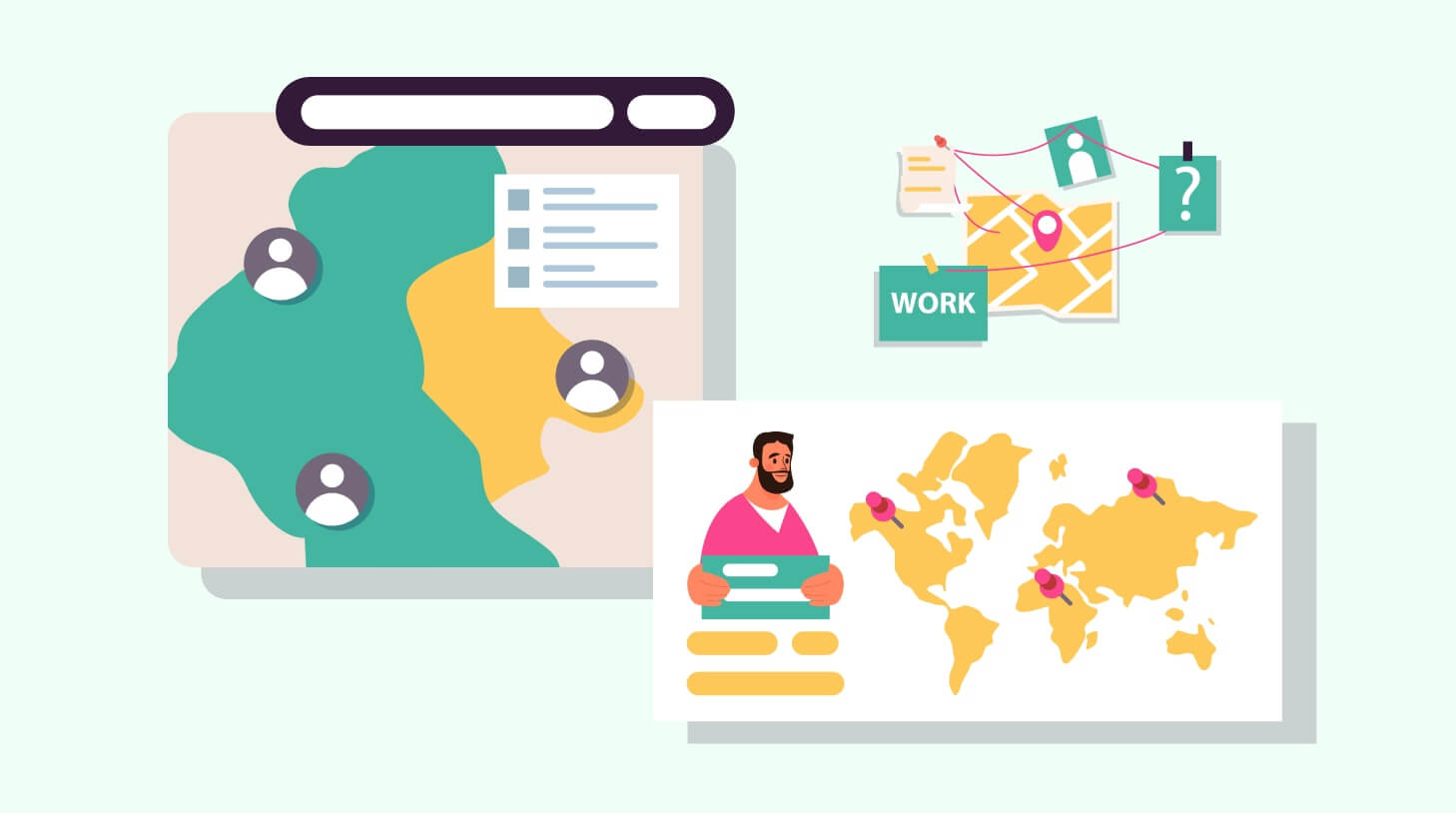What is employee onboarding and how to get it right
Onboarding is the process of integrating new hires into the workplace, helping them understand their work environment, company culture, and making them feel welcomed. It's crucial as it helps new hires reach productivity faster, improves employee retention, and is particularly important for remote employees or interns.

Your new hire is starting soon — that’s exciting! Your team puts a lot of effort into hiring the best candidate, so you need to ensure that they’ll stay in your company and thrive for a long time. The first step to achieve this is an effective onboarding process to help employees acclimate to their new workplace and get productive quickly.
Contents
What is employee onboarding?
Onboarding new hires is the process companies go through to welcome and integrate employees into the workplace. This very definition suggests that the employee onboarding process extends far beyond the first day of a new hire – it continues until they’ve fully adjusted to their role and team.
And this is the main difference between onboarding and orientation. The employee onboarding definition refers to any action that helps new hires understand how things work in their new work environment, get acquainted with the company culture, and feel welcomed and valued in their team.
Employee orientation, on the other hand, is the first step of onboarding. It’s when new hires learn the basics of their environment: for example, they might familiarize themselves with the office building and company policies, understand their new job duties and get introduced to their colleagues.
Why is onboarding important?
Think back to your first day in any job – chances are you were excited but nervous. If you don’t receive enough attention and instruction, that may not bode well for your mood or your motivation to get up to speed in your new capacity.
This may be one of the reasons that more than 25% of new hires quit their jobs after their first three months. And this is a huge loss for a company that must repeat a costly hiring process to find a replacement so soon – not counting the resources spent to train or compensate that new employee during their time with your company.
So onboarding new employees effectively can improve your company’s employee retention.
Another benefit of a good onboarding policy is that new hires reach full productivity faster. If they don’t receive adequate help from HR or their manager, and they’re just trying to make sense of everything on their own, your company loses potential revenue this employee would otherwise bring. If new hires go through a well-developed onboarding process, they’ll be quicker to settle in their role and start producing value for their team.
And an effective process is even more imperative when you’re onboarding remote employees (who have extra difficulties in connecting with their colleagues due to distance) or interns and graduates (who are new to your company and also to the world of employment).
Why it’s crucial to welcome new hires
Employee onboarding shouldn’t stop at company policy, benefit enrollment, job training, and tech logins — the way your company makes employees feel is a significant part of company culture, which is an essential ingredient of attracting and retaining top talent in today’s job market. It also goes a long way in building lasting employee engagement.
There should be two main components involved with a successful onboarding strategy: making sure new hires are prepared with all of the necessary information to work within your organization and creating a positive, comfortable environment where everyone feels supported and included. A fully optimized onboarding experience should welcome a new hire in a way that leaves them feeling prepared to perform their role and excited to be part of your team.
Additional resources for welcoming a new hire:
Onboarding process steps
When designing the onboarding process, there are many things you can do to help new hires, like sending them a welcome package with company swag, arranging a team lunch or dinner with colleagues, or preparing a presentation. Whatever you include in your own process, there are several onboarding best practices that you could follow:
1. Communicate with new hires regularly
If your new hire’s start date is more than two weeks away, make sure to keep communicating with them and show that you’re looking forward to having them on board. You can prepare a welcome package with company swag or send them your employee handbook in advance. You could also ask the new hire’s prospective manager to send an email welcoming their new team member.
2. Plan the new hire’s first week
When the new employee first arrives for work, they will be uncertain about what their day will be like. It’s up to you to show them that you’re fully prepared to welcome them properly. So, prepare a plan for their first few days on the job and check all the important boxes (like setting up their workstation or informing the front desk employees about the new hire’s arrival).
3. Welcome them with open arms
Be enthusiastic, friendly, and positive from day one. Give the new hire a company walkthrough and introduce them to their co-workers at nearby desks first. Schedule a team lunch for them to get acquainted with others on their team and make sure their manager meets with them regularly throughout this crucial first week. It’d be useful to provide the new employee with a checklist or schedule with all the onboarding activities you have planned.
4. Keep it up
The onboarding process doesn’t end after the first week is over. You need to ensure your new hire has enough basic yet meaningful work to do almost from the beginning to help build confidence. Their manager should have a plan to assign that work and also support their smooth integration into the team. Check in with both the new hire and their manager after two weeks and at the end of the new hire’s first month and give them any support they might need.
A well-thought-out employee onboarding program – taking into account these four steps – could make all the difference in successful employee retention and engagement. It’s imperative both to employee retention and engagement that new hires know that your company values them right from the start.
Additional resources for creating an onboarding process:
Why an onboarding checklist is important
There are a lot of moving pieces to a comprehensive employee onboarding strategy and starting a new job is already a situation that can inspire feelings of anxiety, uncertainty, or information overload. Remember the first day of school? It’s like that, but with even more at stake.
An onboarding checklist provides a loosely-structured schedule that prioritizes the most important aspects of welcoming a new hire while also helping them gain confidence about their new role and environment. Onboarding is your best chance to make a strong first impression as an efficient, organized, and thoughtful place to work and a new hire checklist is the ideal tool to help you do it.
Improve the initial employee experience by providing them with a copy of the list so that they know what to expect.
Additional resources for creating an onboarding checklist:
- Onboarding New Hire Checklist
- Remote Employee Onboarding Checklist
- IT Onboarding Checklist
- Onboarding Checklists Templates
- Onboarding New Managers Checklist
Remote onboarding
The rise of remote work has added new obstacles for HR professionals to consider. It’s even easier to feel lost, overwhelmed, or confused if you can’t check in with a friendly face nearby. How do you make a new hire feel welcome and supported from a distance?
It’s extremely important to streamline the formal onboarding workflow and communicate the process and all information involved as clearly as possible for remote workers. Help them get comfortable with company communication tools as quickly as possible, set up some video calls or virtual meetings with relevant managers and team members, and consider assigning them an “onboarding buddy” to reach out to with any questions.
Onboarding software is an ideal tool for organizing the process and a friendly colleague can help personalize and support the experience.
Additional resources for remote onboarding:
- Remote Employees Onboarding Checklist
- Working, Hiring, and Onboarding in the New Normal
- Remote Onboarding FAQs
Employee onboarding tools and software
Hiring a new employee involves a significant investment of time, money, and resources. From interviewing to onboarding, it’s important to be thorough and organized each step of the way — not only for logistical reasons, but also because making a positive impression is a key component of acquiring highly-qualified talent in a competitive job market.
Using employee onboarding tools and software can help streamline communication, facilitate training, ensure compliance, and manage necessary paperwork, among other things. It can also make the entire process easier for human resources professionalwhat is s by incorporating automation and notifications into the workflow to ensure all tasks are completed in a timely manner.
Creating and implementing a consistent and comprehensive onboarding strategy improves the efficiency and productivity of your organization as you empower new hires to step into their new position with comfort and confidence.
Frequently asked questions
- What is employee onboarding?
- Employee onboarding is the process of welcoming and integrating new hires into the workplace. It extends beyond the first day and continues until the employee has fully adjusted to their role and team. It includes actions that help new hires understand their work environment, company culture, and feel welcomed in their team.
- Why is onboarding important?
- Onboarding is crucial as it helps new hires acclimate to their new work environment and reach productivity faster. It can improve employee retention and engagement, and is particularly important for remote employees or interns who may face additional challenges.
- What are the steps in the onboarding process?
- The onboarding process involves regular communication with new hires, planning their first week, welcoming them warmly, and providing ongoing support. It's important to have a well-thought-out plan that includes these steps to ensure successful employee retention and engagement.
- Why is an onboarding checklist important?
- An onboarding checklist provides a structured schedule that prioritizes the most important aspects of welcoming a new hire. It helps new hires gain confidence about their new role and environment and is a tool to make a strong first impression.
- What is remote onboarding?
- Remote onboarding involves welcoming and integrating new hires who work remotely. It requires clear communication, familiarization with company communication tools, setting up virtual meetings, and possibly assigning an "onboarding buddy" to support the new hire.




